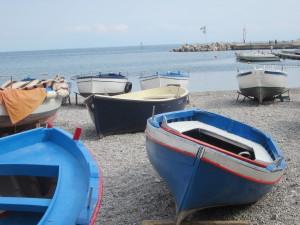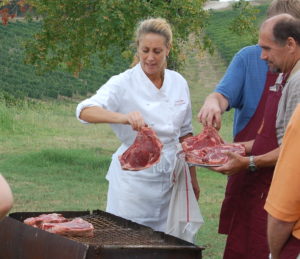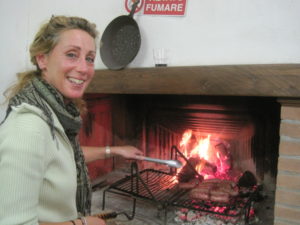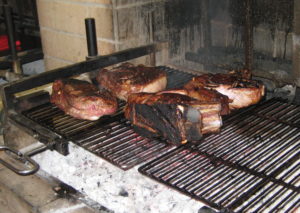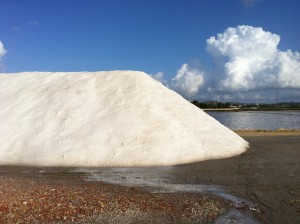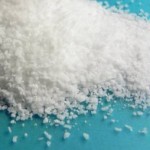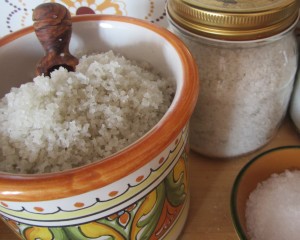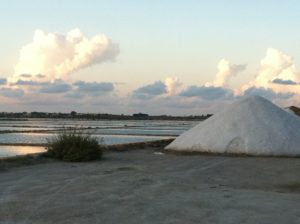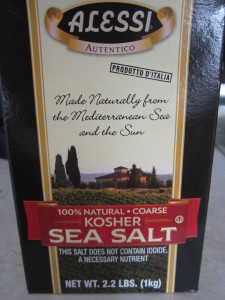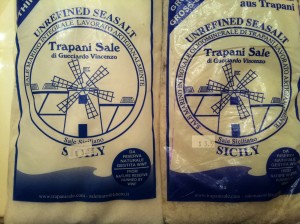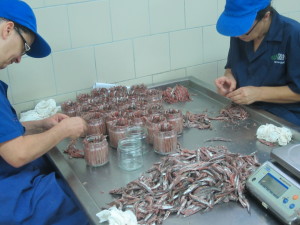 They eat a lot of anchovies in Italy. In fact, anchovies are the base of Italian umami. As diverse as each regions’ cuisine is, anchovies are one of the things that pulls a diverse cuisine together into a whole. Delicious and versatile, the anchovy is an abundant fish high in omegas and essential fatty acids. They are easy to cook, whether batter dip and fried, served with a salsa of capers and parsley, or quick “cooked” in vinegar and dressed with olive oil and parsley. They are also widely preserved, salted and canned to use in a variety of ways, on pizza, on bread, and in pasta sauces. Following an ancient Roman recipe for garum, modern Italians along the southern coasts brine anchovies and allow them to age in wooden barrels. The resulting liquid gold is the definition of umami: savoriness.
They eat a lot of anchovies in Italy. In fact, anchovies are the base of Italian umami. As diverse as each regions’ cuisine is, anchovies are one of the things that pulls a diverse cuisine together into a whole. Delicious and versatile, the anchovy is an abundant fish high in omegas and essential fatty acids. They are easy to cook, whether batter dip and fried, served with a salsa of capers and parsley, or quick “cooked” in vinegar and dressed with olive oil and parsley. They are also widely preserved, salted and canned to use in a variety of ways, on pizza, on bread, and in pasta sauces. Following an ancient Roman recipe for garum, modern Italians along the southern coasts brine anchovies and allow them to age in wooden barrels. The resulting liquid gold is the definition of umami: savoriness.
Don’t discount anchovies because you had a bad experience with a pizza. There really is nothing like them to add depth and flavor to a dish, which is exactly why they’re referred to as Italian umami. One of our favorite new summer recipes we picked up in Piedmont this past June is summer tomatoes stuffed with a salsa verde of parsley, anchovies, bell pepper, hard boiled egg and bread, with olive oil to meld the whole thing together. Recipe to follow! Also, toasted french bread spread with cold butter and topped with an anchovy fillet is a favorite cocktail nibble. It must be tried to be believed!
 Anchovy by any other name…
Anchovy by any other name…
There are two separate words in Italian for anchovy: alici refers to the fresh fish, while acciughe means the preserved fish. Anchovies are preserved by gutting and removing the head then salting the fish, pressing it down with a weight for 4 or 5 months, then washing them with brine and either salt- or oil- packing them until ready to be eaten. The best place to buy them is when you’re in Italy, they last forever covered with olive oil in their jar in the fridge. Several jars in my fridge are proof to that. Or buy them in the US at a specialty store or good grocery store. It’s best to purchase the fillets rather than the paste in a tube. That’s more reminiscent of cat food, frankly.
Roman Garum reborn
 The ancient Roman condiment garum was the liquid resulting from fermenting anchovies in salt and was used to flavor most of their foods, the original Italian umami. Today, they make a similar product, called colatura, on the Amalfi coast in the tiny towns of Cetara and Vietri. This amber colored liquid is the essense of anchovy and is used sparingly to flavor a variety of dishes. The colatura is made in the summer by layering the anchovies with sea salt in a wooden barrel, then weighting and pressing them until the winter. When the colatura is ready they open a hole in the barrel and let the liquid drip out. It has a strong odor, as you can imagine, like asian fish sauce, but it delicious in seafood dishes, giving it an extra savoriness that is essential. Add it to spaghetti tossed with extra virgin olive oil, minced garlic, parsley and anchovy fillets.
The ancient Roman condiment garum was the liquid resulting from fermenting anchovies in salt and was used to flavor most of their foods, the original Italian umami. Today, they make a similar product, called colatura, on the Amalfi coast in the tiny towns of Cetara and Vietri. This amber colored liquid is the essense of anchovy and is used sparingly to flavor a variety of dishes. The colatura is made in the summer by layering the anchovies with sea salt in a wooden barrel, then weighting and pressing them until the winter. When the colatura is ready they open a hole in the barrel and let the liquid drip out. It has a strong odor, as you can imagine, like asian fish sauce, but it delicious in seafood dishes, giving it an extra savoriness that is essential. Add it to spaghetti tossed with extra virgin olive oil, minced garlic, parsley and anchovy fillets.
Ordering colatura
Gustiamo is an import company out of New York which imports and sells it on line, check it out.
The photos on this page are from a visit a few years ago to the Delfino production facility in Cetara. At Ecco La Cucina, our culinary tours to Italy, we like to get down to the nitty gritty of how food and wine are made in Italy, tasting our way through each region. Unfortunately, they no longer allow visitors to enter where the women are cleaning and packing the salted anchovies, so these photos are cherished!
